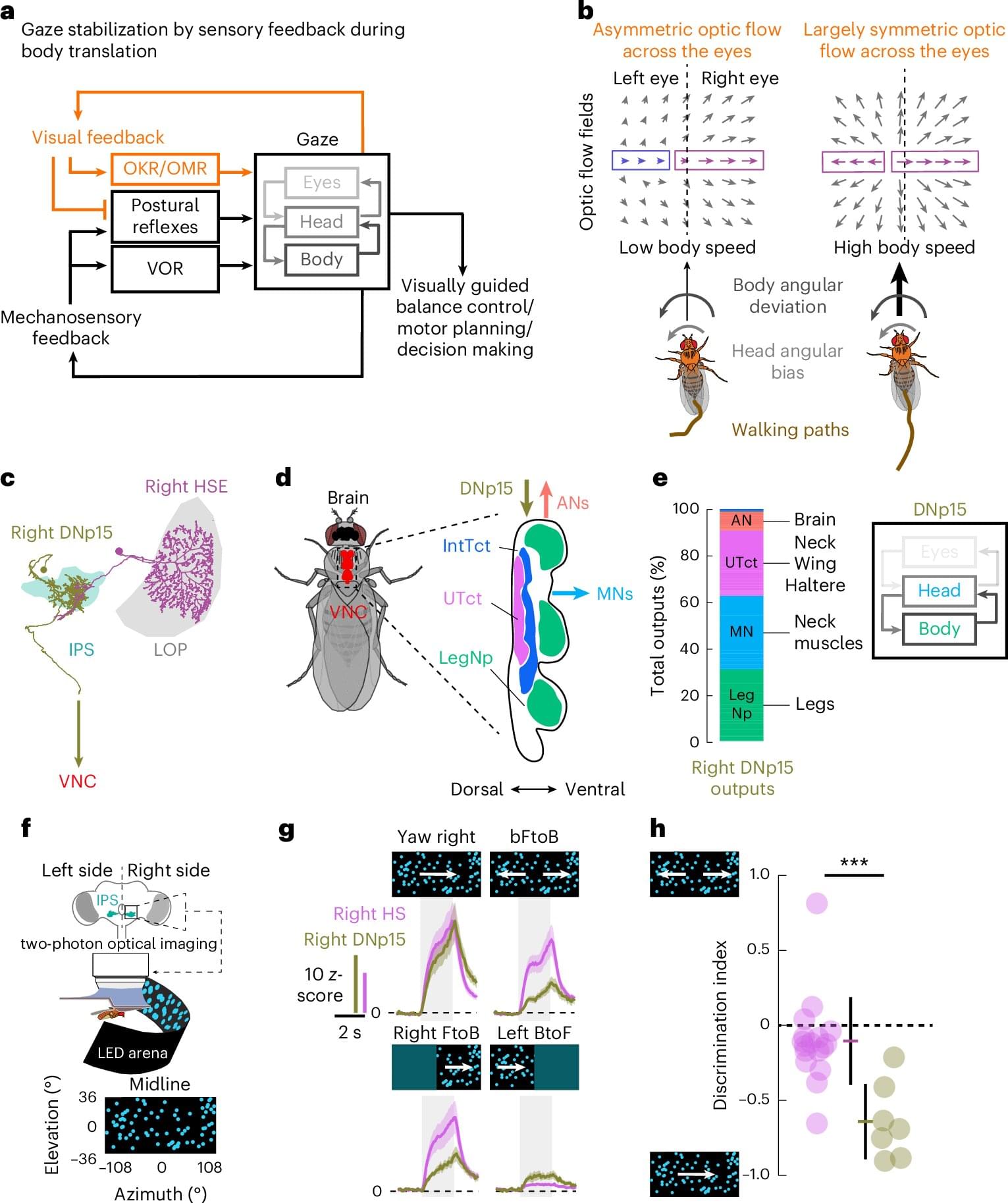When a fruit fly is navigating straight forward at high speed, why does it know that it’s not straying off course? Because as long as the fly moves directly forward, the visual scene shifts from front to back in a near-perfect mirror image across both retinas—generating, in other words, a symmetrical visual motion pattern. This pattern, known as “optic flow,” provides a powerful cue for detecting self-motion and maintaining direction.
Moreover, at high speeds, as soon as the fly starts deviating from its straight-ahead course even slightly, the optic flow becomes less symmetrical. But the high level of translational symmetry due to the fly’s high-speed forward motion could mask smaller binocular asymmetries caused by slight rotational inflections in its trajectory.
Therefore, detecting such “errors” and correcting them at the motor level is not trivial and must happen very quickly. Only then will the fly ensure it continues to move straight forward, as intended.
